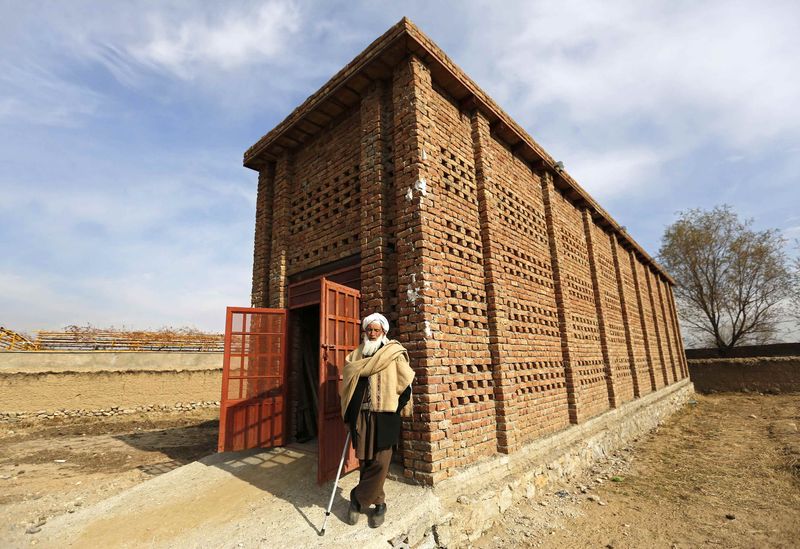By Jessica Donati
KABUL (Reuters) - Afghanistan has new roads, sections of which many deem too dangerous to use. It has a turbine to fill electricity needs that remains in pieces. Sixteen transport planes given to the Air Force were scrapped having barely flown.
International aid has been the mainstay of the Afghan economy since the Taliban were ousted in 2001, and donors, chiefly the United States, have plenty to show for tens of billions of dollars they poured into the war-ravaged nation.
Yet for all the success of cities rising from the rubble and boys and girls flocking to schools, there are frequent examples of aid poorly spent, with little regard for the long term viability of projects once money taps are turned off.
Take Mohammad Nasir, a farmer in his 70s who was recommended to Reuters by the U.S. Agency for International Development (USAID) as an example of its success in Afghanistan.
Nasir earns over three times the national average wage of around $650 a year, thanks largely to U.S. money that covered most of the cost of the concrete trellises on which his grapes grow near Kabul.
Yet once the USAID project finishes this month, even its contractor says the program may be unsustainable. USAID had hoped farmers would copy the expensive, built-to-last structures with local resources, but new techniques have yet to catch on.
"I don't think it will be possible for them (farmers) to do it by themselves," said Amanullah Sahak, regional coordinator for the Commercial Horticulture and Agricultural Marketing Program.
COSTLY MISTAKES
More than $100 billion has been spent on aid in Afghanistan, the bulk of it from the United States.
Rebuilding security forces soaked up nearly two-thirds of U.S. funding, leaving tens of billions of dollars for civilian projects, which, according to the U.S. reconstruction watchdog, have not always been spent wisely.
"Evidence strongly suggests that Afghanistan lacks the capacity - financial, technical, managerial, or otherwise - to maintain, support, and execute much of what has been built or established during more than a decade of international assistance," the Special Inspector General for Afghanistan Reconstruction (SIGAR) said.
The danger posed by militants has hampered progress. In Nasir's case, the hour's drive from the capital to his farm is considered too risky for foreign USAID staff.
The problem has become more pressing as foreign troops withdraw at the end of the year, funding for programs drops amid donor fatigue and the government struggles to shake off a reputation as one of the world's most corrupt.
Efforts to wean the country off aid have focused on two multi-billion dollar projects to tap Afghanistan's copper and iron ore. But both are years away from commercial production, limiting the government's chances of reshaping the economy.
Afghanistan aims to raise around 30 percent of its 2014 budget internally, but it is off target and had to ask donors for an emergency bailout in September to pay salaries.
The Afghan aid effort, one of the biggest in history, has been tarnished by costly failures.
Nearly $500 million was spent on 20 transport planes for the Afghan Air Force, but most of them were destroyed this year and sold for scrap because the armed forces were unable to use and maintain them.
Electricity supply to Kandahar in the south, a focal point of counter-insurgency efforts, remains severely limited and dependent on aid as a third turbine at the Kajaki dam designed to boost output has yet to be installed.
In 2008, hundreds of NATO troops transported the turbine parts to the dam across dangerous terrain held by the Taliban, but the hardware remains unassembled.
"HUMAN CAPACITY"
USAID says the government led by President Ashraf Ghani, who was appointed in September, can maintain progress as foreign troops leave after more than a decade of war.
"The thing that's changed in 12 years is that Afghans now have human capacity that they didn't have before," Larry Sampler, USAID's chief for Afghanistan and Pakistan, told Reuters, referring to progress made in education.
"What Ghani has to do is capitalize on the human capacity."
But three months into his presidency, Ghani has yet to appoint his ministers and some question whether he can deliver on promises to boost the economy, which has collapsed from an average 9.4 percent growth between 2003-2012 to 1.5 percent this year, according to the World Bank.
Not all aid money has been wasted.
Life expectancy rose from 55 to 61 years between 2001 and 2012, underlining improvements in health care.
More than nine million children are registered in school, compared with one million under Taliban rule. World Bank figures show income per capita rose from $186 to $688 a year over the decade to 2012.
But gains can be reversed. Civilian and military casualties from the Taliban insurgency hit new highs this year as NATO reduces its presence, threatening stability and the safety of aid workers.
"Clearly there are more events, and some violent events, there's more criminality, there have been more abductions this year, than there were last year," said John Watt, Oxfam's director for Afghanistan.
He said he offered staff the opportunity to leave over security concerns. Two people immediately packed their bags.
(Editing by Mike Collett-White and Maria Golovnina)
